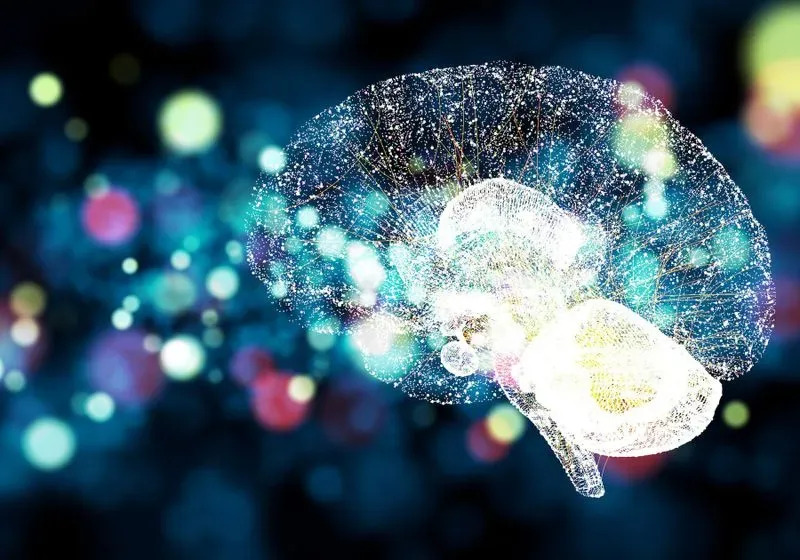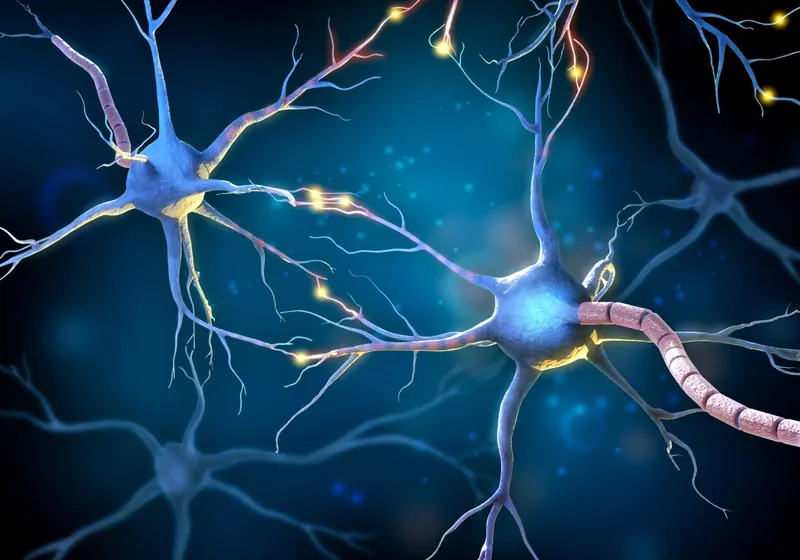Our Blog

Ketamine's history as a useful medicine and a therapeutic tool for mental health conditions
Ketamine is an N-methyl-d-aspartate receptor antagonist and glutamatergic modulator (Donoghue et al, 2015). It is a colorless and odorless dissociative drug which produces a sense of mind-body separation, which are unique effects to this class of drug. Ketamine is used medically as an anesthetic and to elicit effects such as sedation and pain relief.
Ketamine was first discovered as a chemical derivative of phencyclidine (Domino and Warner, 2010). Domino and Warner (2010) gives a thorough account of the events leading up to the discovery of ketamine between 1950 to 1970. Briefly, V. Harold Maddox, Ph.D. had discovered a new chemical organic reaction which resulted in the synthesis of phencyclidine on March 26, 1956. However, animal toxicity testing and clinical studies revealed that phencyclidine was not suitable for human anesthesia due to incidences of prolonged emergence delirium. At the time, the Head of Pharmaceutical Research at Parke Davis (Cal Bratton, M.D., Ph.D.) perceived that a short-acting derivative of phencyclidine would limit emergence delirium. Subsequently, a Professor of Organic Chemistry at Wayne State University (Calvin Lee Stevens, Ph.D.), who doubled as chemical consultant to Parke Davis synthesized a series of phencyclidine derivatives. Preclinical pharmacological testing revealed that one of the agents which produced excellent anesthesia was short acting and was selected for human trials (Li and Vlisides, 2016). The agent, now known as ketamine, was eventually approved for clinical use as an anesthetic in the form of Ketalar in 1970. Ketamine later became a restricted schedule II substance in the United States due to its increased abuse (Domino and Warner, 2010; Li and Vlisides, 2016). Presently, ketamine is diversely administered intravenously, intramuscularly, orally, intranasally, rectally, topically, sublingually, subcutaneously, and epidurally (Li and Vlisides, 2016) for various purposes including Ketamine Assisted Therapy (KAT). KAT is defined as the combination of the administration of ketamine with an additional non-pharmacological component to treatment such as psychotherapy typically done before and after the session (KATA Canada, 2022). In the table below (Table 1), major occurrences that have shaped the use of ketamine in KAT is summarized.
Table 1: Major events that have shaped the clinical application of ketamine in psychiatric therapy
Time | Development |
1962 | A researcher named Calvin Stevens first synthesized ketamine (Domino and Warner, 2010). |
1964 | Edward Domino found out that higher doses of ketamine knocked people out, while lower doses produced odd psychoactive effects. |
1970 | Ketamine was approved by the F.D.A. as an anesthetic and was marketed by Parke-Davis. |
1970 | The potential for ketamine to be used in the treatment of psychiatric disorders was first noted as reported by Salvador Roquet and his colleagues in Mexico (Walsh et al., 2022) |
1999 | Ketamine became a controlled substance in the US in 1999. In Canada, the notice for ketamine to become a controlled substance was issued in 2004. |
2000 | First placebo-controlled, double-blinded trial to assess the treatment effects of ketamine in patients with depression (Berman et al., 2000). |
2006 | The National Institute of Mental Health concluded that a single intravenous dose of ketamine had rapid antidepressant effects (Zarate et al., 2006). |
2010 | Doctors recommended off-label use of ketamine to acutely suicidal patients; ketamine clinics start to spring up. |
2019 | A ketamine-derived therapy (intranasal esketamine) first approved by the US FDA for mental health as augmentation therapy for treatment-resistant depression (Walsh et al., 2022). Health Canada approved intranasal esketamine in May, 2020. |

Ketamine is now known to have a wide variety of uses clinically and non-clinically (as a recreational drug). Clinically, apart from its use as an anesthetic, the drug is relevant for treating diseases associated with mental health and substance use disorders (Walsh et al., 2022). In psychiatry, ketamine demonstrates rapid and transient antidepressant and anti-suicidal effects. The original and early work which investigated ketamine as an abreactive agent using low to moderate doses reported antidepressant responses associated with overall psychological benefit that could last for up to two weeks (Khorramzadeh and Lofty, 1973; Golechha et al., 1985). Other early investigations were conducted by Dr. Salvador Roquet who was among the early explorers of ketamine as an adjunct to psychotherapy, and he co-discovered ketamine as an admixture in psychotherapy in the 1970s in Mexico (Wolfson, 2016). Through consultation with a colleague anesthesiologist, Roquet had discovered that ketamine in sub-anesthetic doses produced notable changes in psychological functioning that could be helpful in his psychotherapy process. His approach involved administering ketamine to groups of patients and his work was widely shared and admired, but he was eventually arrested in 1974. After his release, Roquet discontinued the exploration of mind-altering substances including ketamine in his psychotherapy sessions.
Recently, there has been increased study of ketamine for treatment of a broad range of mental health conditions, alongside increasing off-label prescriptions for conditions other than depression. Walsh et al. (2022) recently reviewed the use of ketamine in treating conditions such as depression, bipolar disorder, social and generalized anxiety, obsessive-compulsive disorders, post-traumatic stress disorders, substance use disorders and eating disorders. Table 2 summarizes the various clinical applications of ketamine which includes, a particularly interesting use, as a tool to explore the inner workings of the mind and the landscape of consciousness and altered brain states from a neurobiological perspective (Mashour, 2016).
Table 2: Summary of clinical uses for ketamine:
Anesthesia | Analgesia and sedation | Psychiatry and neuroscience | |
Advantageous settings: | Acute settings: | Chronic settings: | Emerging use: |
• Hemodynamic instability | • Procedures | • Cancer pain | • Depression |
• Pediatric patients | • Burns | • CRPS | • Suicidal ideation |
• Uncooperative patients | • ED Agitation/Pain | • Phantom limb pain | • PTSD |
• Traumatic brain injury | • Post-operative pain | • Fibromyalgia | Modeling: |
• Bronchospasm | • Ischemic pain | • Schizophrenia | |
• Battlefield/Mass casualty events | • Migraines | • Consciousness | |
Table 2 is adapted from Li and Vlisides, 2016. ED, emergency department; CPRS, complex regional pain syndrome; PTSD, post-traumatic stress disorder.
A growing body of literature has demonstrated the clinical value of ketamine across diverse settings, with emerging roles in pain medicine and treatment-resistant depression. These days, ketamine research is mostly focusing on how ketamine works, the efficacy of the delivery method, and the best ways for companies and healthcare providers to support patients when administering ketamine. As explorations of the value of ketamine assisted therapy in psychiatry continues, the scope of application is likely to widen, together with regulatory requirements and recommendations. Though it is impossible to predict the exact future trajectory of the endless possibilities of ketamine, is it safe to project that with accumulating scientific research and evidence, ketamine has an instrumental place in mental health disorder therapies in the near future. Ketamine assisted therapy seems to be in the past, the present, and the future practice.
References
- Donoghue, A. C., Roback, M. G., & Cullen, K. R. (2015). Remission From Behavioral Dysregulation in a Child With PTSD After Receiving Procedural Ketamine. Pediatrics, 136(3), e694–e696. https://doi.org/10.1542/peds.2014-4152
- Walsh, Z., Mollaahmetoglu, O. M., Rootman, J., Golsof, S., Keeler, J., Marsh, B., … & Morgan, C. J. (2022). Ketamine for the treatment of mental health and substance use disorders: comprehensive systematic review. BJPsych Open, 8(1), e19.
- Domino, E. F., & Warner, D. S. (2010). Taming the ketamine tiger. The Journal of the American Society of Anesthesiologists, 113(3), 678-684.
- Golechha, G. R., Rao, A. V. N., & Ruggu, R. K. (1985). Ketamine abreaction-two case reports. Indian Journal of Psychiatry, 27(4), 341.
- Khorramzadeh, E., & Lotfy, A. O. (1973). The use of ketamine in psychiatry. Psychosomatics, 14(6), 344–346. https://doi.org/10.1016/S0033-3182(73)71306-2
- Wolfson, P. (2016). The Ketamine Papers Science. Therapy, and Transformation.
- KATA Canada, 2022. Outpatient Use of Ketamine for Mental Health Conditions. Practice Standards Recommendations. https://katacanada.org/wp-content/uploads/2022/10/KATA-Ketamine-for-Mental-Health-Recommendations-V3.pdf. Accessed: 09/06/2023
- Zarate, C. A., Singh, J. B., Carlson, P. J., Brutsche, N. E., Ameli, R., Luckenbaugh, D. A., … & Manji, H. K. (2006). A randomized trial of an N-methyl-D-aspartate antagonist in treatment-resistant major depression. Archives of general psychiatry, 63(8), 856-864.
- Li, L., & Vlisides, P. E. (2016). Ketamine: 50 Years of Modulating the Mind. Frontiers in human neuroscience, 10, 612. https://doi.org/10.3389/fnhum.2016.00612.
- Berman, R. M., Cappiello, A., Anand, A., Oren, D. A., Heninger, G. R., Charney, D. S., & Krystal, J. H. (2000). Antidepressant effects of ketamine in depressed patients. Biological psychiatry, 47(4), 351-354.
- Wilkinson, S. T., Toprak, M., Turner, M. S., Levine, S. P., Katz, R. B., & Sanacora, G. (2017). A survey of the clinical, off-label use of ketamine as a treatment for psychiatric disorders. American Journal of Psychiatry, 174(7), 695-696.
- Lee, J., Narang, P., Enja, M., & Lippmann, S. (2015). Use of ketamine in acute cases of suicidality. Innovations in clinical neuroscience, 12(1-2), 29.
- Mashour G. A. (2016). Network-level mechanisms of ketamine anesthesia. Anesthesiology 125, 830–831. doi: 10.1097/ALN.0000000000001276
Writer: Emelia H. Adator

